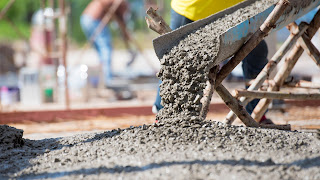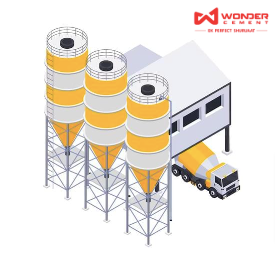Want to set up a cement factory in India? Here are the key factors one should consider
It is obvious that setting up a cement factory can be very lucrative. Though India is the second largest cement manufacturer in the world, setting up a cement factory in India can turn out to be the biggest pain in your head because it involves a lot of investment, research, careful planning, and manpower. This is done to set up the factory in a perfect location and can produce a high quality product that meets market demand. So if you are considering setting up a cement factory in India, here are the key factors you should keep in mind.
1. Market research and demand
Before making any plan for setting up a cement company, it is important to know about the competition and understand the demand for cement in a particular area. It does not matter how creative your mind is or how good your product is if you set up your company where there is no demand. Properly analyze the market size, competitors, buying behaviour, current challenges, and potential problems.
2. Location
To increase the level of competition, identify a perfect location for a cement manufacturing company that is close to the raw material supplier and transportation. For setting up the factory, it needs assessment in terms of energy, land area, emission, and transportation, making it possible to make a rough analysis for a region and country.
3. Raw Materials
The raw material is the most important ingredient to produce any product. Large quantities of raw materials such as Limestone, Shells, and chalk or marl combined with shale, clay, slate, blast furnace slag, silica sand, and iron ore are used for cement production. Therefore, the location of the factories should be close to the source of raw materials to avoid transportation costs.
4. Legal ways for land acquisition
Land acquisition is one of the significant steps because thousands of investment projects can come to a halt if there is a land dispute. Due diligence of such acquisition is a must to acquire land. The Indian government has various regulations in place for the establishment and operation of industries, including cement factories. It is important to be familiar with these regulations and obtain all necessary documents. Acquire the land required for the factory and ensure that it is zoned for industrial use.
5. Environmental clearance
Once all the operating factors are decided, the next step is to get the license and permit to operate the factory. Getting the license and permit proves that you are not violating any environmental laws like damaging trees, or forests, damaging air quality or polluting the local community. Once your project is found suitable, you will get the license for constructing the factory.
6. Get the power supply
There are a few different ways to obtain connectivity. The first option is Cement factories can connect to the electrical grid and purchase power from utility companies. This can be a reliable and cost-effective option for factories located in areas with well-developed electrical infrastructure. The second option is diesel generators which are beneficial for industries located in remote areas. The third option is captive power plants through which the cement industry can create its power plant and generate electricity. The most advanced form of co-generation is combined heat and power, which is more sophisticated and less wasteful.
7. Get the required Manpower
After setting up the factory, you need the required manpower for cement production. Hire professional engineers, subordinates, managers, etc., to start the process. Without any professional help, you cannot begin to the factory.




Comments
Post a Comment